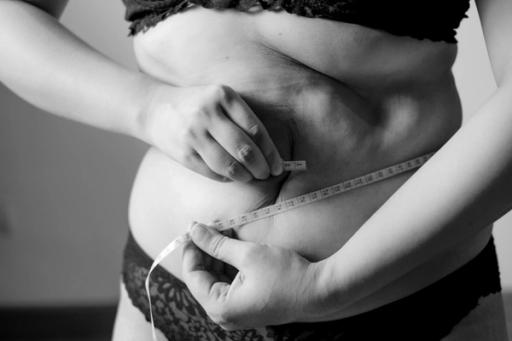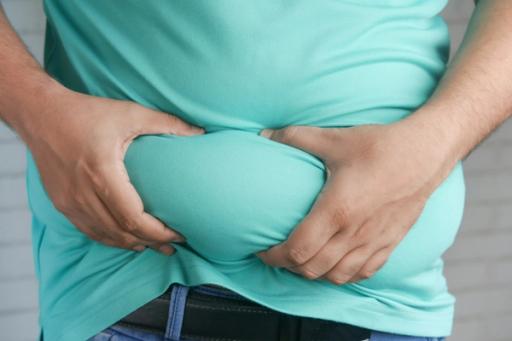
Imagine that you have a big event coming up, like a wedding or vacation, and you want to lose weight fast. You heard that cutting calories can help achieve this. But how many calories should you cut? You'll want to cut enough calories to lose weight quickly, but not so many that you feel miserable and starve. Cutting 1,000 calories a day might be a good place to start. But how many pounds will you lose if you cut 1,000 calories daily? How much weight will I lose if I cut 1000 calories a day? In this article, I will answer this question and help you understand how cutting 1,000 calories daily can help you lose weight quickly while staying healthy and avoiding muscle loss. Calorie counting can be tedious, but it doesn't have to be. So, how calories are measured?
Cal AI's calorie tracker can help you achieve your goals without the hassle. This easy-to-use tool will help you accurately track your calories to cut 1,000 calories daily and reach your weight loss goals.

Burning 1,000 calories daily is achievable but depends on:
Physically active people and those with larger bodies or more muscle mass may find burning 1,000 calories easier than those:
“A typical strength workout will burn 300 to 400 calories in one hour on average,” says TJ Mentus, CPT, a certified personal trainer at Garage Gym Reviews. “One hour of running will burn between 600 to 700 calories. Looking at those two typical forms of exercise, you will need to exercise at least two hours a day, which may not be realistic for most people. Unless you’re already in good shape, I would not suggest going right into two hours of working out as you will place yourself at a higher risk of burnout and possible injury.”
The time required to burn 1,000 calories varies widely based on:
“Higher intensity activities generally burn more calories,” says Kyrie Furr, CPT, a certified personal trainer and performance coach with Barbend.
“For example, high-intensity interval training (HIIT) workouts can vary widely in intensity, but they typically involve alternating between bursts of high-intensity exercise and periods of rest or lower intensity.” Furr points out that for many individuals, torching 1,000 calories may require a combination of exercises and physical activity scattered throughout the day rather than one long, intense workout.
Losing weight or getting in shape is a gradual process. No single workout will have a long-term effect on your body. When trying to determine a realistic goal, it’s essential to consider what level of activity you’ll be able to sustain weekly.
Are you willing to commit to one hour a day? Two hours a day? What about three days a week? Five days a week? The number of calories you burn while exercising depends on factors such as your:
Usually, males and people with bigger bodies burn more calories daily than females and people with smaller bodies. For example, a 100-pound female will have to spend much more time exercising to burn 1,000 calories than a 250-pound male. Experts recommend at least 150 minutes of moderate aerobic activity per week and strength training for all major muscle groups at least twice weekly. If you’re creating a new workout program to get in shape, aiming to achieve at least this minimum level of physical activity is a good place to start.
According to the American Council on Exercise (ACE), here’s a rough look at how many calories three people would burn per day and week following the minimum guidelines:
Person 1 (95 lbs.)
Person 2 (150 lbs.)
Person 3 (220 lbs.)
Burning 1,000 calories a day is easier for some people than others. For example, a 6-foot, 3-inch 18-year-old male playing on multiple sports teams might quickly burn more than 1,000 calories daily exercising. For a 5-foot, 1-inch 40-year-old female who works a desk job, burning 1,000 calories a day will be more difficult.
Exercising regularly is good for your body, but exercising vigorously to lose an extreme amount of weight or to offset binge eating isn’t. If you’re targeting burning 1,000 calories a day, asking yourself why may be a good idea.
If your goal is to improve your overall fitness or get stronger, measuring your progress in calories burned is a poor way to get meaningful feedback. Keeping track of other markers, such as your body fat percentage, cardiovascular fitness, or strength levels, is a more accurate way to assess your progress.
Burning a set number of calories is meaningless without context if you want to lose weight. If you burn an extra 1,000 calories through exercise each day but consume an additional 1,000 calories, your weight will stay the same.
Here’s an example of what it would take to burn 1,000 calories daily in three different ways.
According to the ACE, here’s a rough guide to how long you would run at various paces to burn 1,000 calories. Keep in mind that your body’s exact number of calories will vary.
At 5 mph:
At 6 mph:
At 7 mph:
At 8 mph:
At 10 mph:
According to the ACE, here’s a rough guide to the number of hours it would take to burn 1,000 calories cycling.
At 5.5 mph:
At 12–13 mph:
At 16–19 mph:
You burn calories during all your daily activities; over a day, these calories may add up to a significant number. For example, for an average male, washing the dishes burns about 174 to 252 calories per hour.
Here’s a look at what it would take to burn 1,000 calories without exercising:
Cleaning or sweeping (1 hour):
Washing dishes (30 minutes):
Shoveling snow (30 minutes):
Moderate walking (60 minutes):
Cleaning gutters (30 minutes):
Total for 3.5 hours:

Actual results vary due to metabolism and the calories you consume. The question is similar: I worked hard and earned a lot of money, but I just spent $1,000, so am I wealthy or poor? You can burn 1,000 calories by riding your bike for 2–3 hours… but your body is programmed to maintain its weight, and you’ll just get hungry and tend to ‘eat-back’ those burned calories.
The body subscribes to homeostasis; it strives to maintain itself. It’s almost like a little accountant in your head whose job is to prompt you with hunger so you eat enough so you don’t lose weight!
So yes, a pound of fat is 3,500 calories, so what it comes down to is creating a calorie deficit: each day, you need to eat LESS than you require, and in this fashion, you prompt your body to revert to its stored energy to make up the energy shortage. Your stored energy is your fat. Your body comprises roughly 37 trillion cells, each requiring energy to sustain itself… even your fat cells, which store energy, require energy daily.
And yes, your muscle tissue consumes more energy than your fat cells, and then you have cells that comprise your organs and even blood cells. Each pound of body weight requires some 14 calories per day. If you weigh 150 pounds, you need 2,100 calories daily to sustain… more if you’re active.
If you burn 1,000 calories, that is either another 1,000 calories you’ll need to eat OR 1,000 calories that will come out of your fat… or a blend in between where you may eat a bit more to reward yourself for having done the exercise… perhaps a 350-calorie muffin—and then the net result would be a deficit of 650 calories.
Just as supply and demand determine the price of a commodity, your weight reflects how much you burn and eat.
To calculate how much weight you could lose in a month by burning 1,000 calories every day, you can follow these steps:
Total Calories Burned = 1,000 calories/day × 30 days = 30, 000 calories
It’s generally estimated that losing 1 kilogram of body weight requires a deficit of about 7,700 calories.
Weight Loss (kg) = Total Calories Burned/ 7, 700 calories/kg = 30 , 000/ 7, 700 ≈ 3.9 kg
If you burn 1,000 calories daily, you could lose about 3.9 kg in a month, assuming your caloric intake remains the same and no other factors affect weight loss.

Safety depends on the individual:
While athletes or highly active individuals can sustain extreme calorie burns, the average person should be cautious about excessive calories.
For the average person, sustained excessive calorie burn can lead to fatigue, increased injury risk, and nutrient deficiencies. It’s best to achieve a healthy balance with fitness rather than chasing extreme calorie burns.
Burning 1,000 calories sounds impressive. That’s nearly a third of a pound. At that rate, you’ll be back in your skinny jeans by summer. Heck, you might even have to buy skinnier jeans. Most adults easily burn 1,000 calories per day, even without movement. Your body constantly works behind the scenes:
These necessary functions use energy or calories; the calories burned through them are your basal metabolic rate (BMR), which accounts for 60 to 75 percent of the total calories you burn daily.
You decide how many additional calories you burn through daily activities such as showering, washing dishes, and exercising. Depending on your size and fitness level, burning 1,000 calories in addition to your BMR is also possible and safe daily.
You burn calories over and beyond your BMR from:
This activity accounts for 15 to 30 percent of your daily calories burned.
Digestion also uses some calories, known as the thermic effect of food, and it accounts for another 10 percent of your daily calories burned.
Your BMR is hard to change as it's set by genetics and size; a more prominent person uses many more calories throughout the day than a smaller one. Gaining muscle and displacing fat can change your BMR because muscle requires more energy.
If all other factors are equal, a body with more muscle burns more calories than one with more fat. Severe calorie restriction can also reduce your BMR because your body conserves energy when it senses starvation.
These changes to BMR happen over time, and you could unlikely raise it by 1,000 calories total. Adding more movement during the day offers an immediate metabolic boost. For most people, burning an additional 1,000 calories through activity is possible and healthy.
One way to boost your daily calorie burn is to include more formal exercise. More prominent individuals can burn 1,000 calories per day through exercise. Smaller-framed people might find burning 1,000 calories daily–every day–through exercise challenging.
For example, it would take a 125-pound person almost 2 hours of pedaling on the elliptical trainer or 1 hour and 40 minutes of running at a 6 mph to burn 1,000 calories. A 185-pound person would burn 1,000 calories in just 75 minutes on the elliptical or a little over an hour running at a 6-mph pace.
Of course, these durations are more than double the 150-minute-per-week recommended for minimal physical activity by the Centers for Disease Control and Prevention. The CDC notes that going beyond the 150-minute recommendation affords numerous benefits.
The American College of Sports Medicine asserts that burning more than 2,000 calories through as much as 5 weekly exercise hours promotes weight loss. To burn 1,000 calories, some people would need to exercise more, like 7 or 8 hours weekly, which is still perfectly healthy. More petite people, however, will find burning 1,000 calories through exercise alone quite time-consuming and exhausting.
Going immediately from couch potato status to burning 1,000 calories per day is not advised. Be realistic about your current fitness level before you start. Endurance athletes, such as those training for long-course triathlons or ultra marathons, do put in 1,000 calories worth of training–or more–on most days.
These individuals work up to these levels of exercise, though, and take time in the off-season to exercise more moderately.
Also, evaluate how much time you have to devote to exercise. If you have a demanding job and a busy family life, you may be unable to carve out 2 or 3 hours per day for exercise. If you skimp, you may do more harm than good on sleep by squeezing in time for extra exercise.
You'll lack the energy to maximize your burn. A study published in the Journal of Sleep Medicine 2013 found that good sleep positively influences the next day's exercise performance. Not getting enough sleep also raises your body's production of hunger hormones, so you eat more. When you're sleepy, you're more likely to reach for calorie-ridden energy drinks to get through your day.
Instead of relying on exercise alone to boost your burn, consider how you could benefit from NEAT or non-exercise thermogenesis. NEAT refers to any calorie-burning activity that is not a formal exercise. This includes walking, doing household chores, fidgeting, and showering.
Modern conveniences, from cars to computers, rob you of daily activities that burn calories. Walk to the store, doctor, or school–if possible. At work, pace while you're on the phone and stroll down the hall to ask a colleague a question rather than send an email.
Connect with your family by taking a brief walk after breakfast, one at lunch, and one after dinner. Clean your house, do laundry, and wash your car. These activities seem small, but the calorie burn adds up quickly to 500 or more daily. Suppose you can burn 500 calories or more through non-exercise activity and another 500 through exercise. In that case, you've easily achieved a 1,000-calorie daily burn in addition to your BMR without over-stressing your body.
Cal AI transforms calorie tracking with cutting-edge AI technology. Just snap a photo of your meal, and we'll do the rest.
Our app combines your phone's depth sensor with advanced AI models to:
With 90% accuracy on visible foods and multiple tracking options like:
We've made nutrition tracking effortless. Whether you're scanning a full meal or a quick snack, Cal AI
Our AI learns from your feedback to improve accuracy. It includes personalized insights and smart reminders to keep you on track. Cal AI makes achieving your fitness goals simpler than ever. Track your calories with your camera using Cal AI's calorie tracker today!